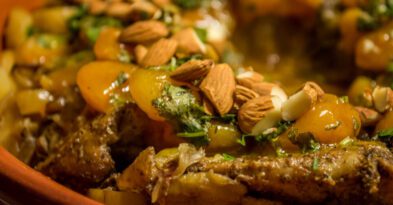Traditional Music of Gnaoua Peoples
In the small village of Khamlia, nestled on the outskirts of Merzouga, the music of the Gnaoua people resonates with profound spiritual energy and centuries-old tradition. Descendants of African communities brought to North Africa centuries ago, the Gnaoua have preserved a unique musical heritage characterized by hypnotic rhythms, soulful vocals, and the metallic shimmer of krakebs (iron castanets). In Khamlia, the most renowned group — Les Pigeons du Sable — welcomes travelers from around the world to share this ancestral art form in an intimate and warmly inviting setting.
The origins of the Gnaoua trace back to Sub-Saharan Africa, particularly present-day Mali, Sudan, and Senegal. Many of their ancestors were brought to North Africa as enslaved people between the 16th and 19th centuries. Despite the hardships they endured, they preserved and transformed their spiritual beliefs and musical traditions into a powerful cultural legacy. Blending elements of Sufi Islam with African animist practices, the Gnaoua developed a unique ritual music used in ceremonies known as lilas, which aim to promote healing, purification, and spiritual trance. Today, the Gnaoua are recognized as guardians of one of Morocco’s most profound and spiritually rich musical traditions. In recognition of its cultural significance, Gnaoua music was inscribed by UNESCO as an Intangible Cultural Heritage of Humanity.
If your itinerary includes an overnight stay in the Merzouga desert, take the opportunity to visit the village of Khamlia and immerse yourself in the history and culture of the Gnaoua people. It’s more than a musical performance — it’s an encounter with a living tradition and an unforgettable spiritual experience.
Watch a video here:



